Kapulani Landgraf: ʻAuʻa
January 17, 2024–September 29, 2024
On January 17, 2024—the anniversary of the 1893 overthrow of the Hawaiian Kingdom—HoMA unveiled Kapulani Landgraf’s powerful installation ‘Au‘a. The work was initially shown at the museum as part of the 2019 Honolulu Biennial. Featuring a new element created by the artist, this exhibition debuts the edition of ‘Au‘a that HoMA subsequently acquired for its permanent collection.
The 100th anniversary commemorations of the American-backed, unlawful overthrow of the Hawaiian Kingdom were a watershed in Kānaka ‘Ōiwi political consciousness. The 1993 observances were punctuated by an historic speech that scholar, poet, and political leader Dr. Haunani-Kay Trask (1949–2021) delivered to more than 10,000 people gathered on the grounds of ‘Iolani Palace. The refrain of Trask’s speech was the emphatic declaration: “We are not American. We are not American. We are not American.”
Along with the oli (chant) that gives the work its title, Trask’s words reverberate throughout Landgraf’s monumental installation. The work features large photographic portraits of 108 Kānaka ‘Ōiwi community leaders from diverse professions and backgrounds, all willing to have their image overlaid with the words, “We Are Not American He Hawai‘i Mau a Mau.” Asserting the unbroken continuity of Hawaiian sovereignty and national identity, the text—like the work—stands as a challenge to reckon with both Kānaka and American settler identities in light of the ongoing colonization and occupation of these islands.
Like many words in ‘Ōlelo Hawai‘i, the term ‘au‘a is layered with meaning. One of its definitions is to hold fast, and Landgraf’s work encourages us to reflect on those who withhold their political affiliation from the United States. The word also refers to an ‘ōpelu fish that is larger and more visible than others in the school. When an ʻauʻa is seen by fishermen, they know that a school is nearby, but that this particular fish will refuse to be caught.
Though each person’s decision to participate in ‘Au‘a was an individual one, for the artist, “The work is about lāhui, a collective voice and a collective conviction to correct the wrong.” Landgraf says, “And even though there are just 108 people represented, there are thousands there, representing generations upon generations of our ancestors and our future descendants.”



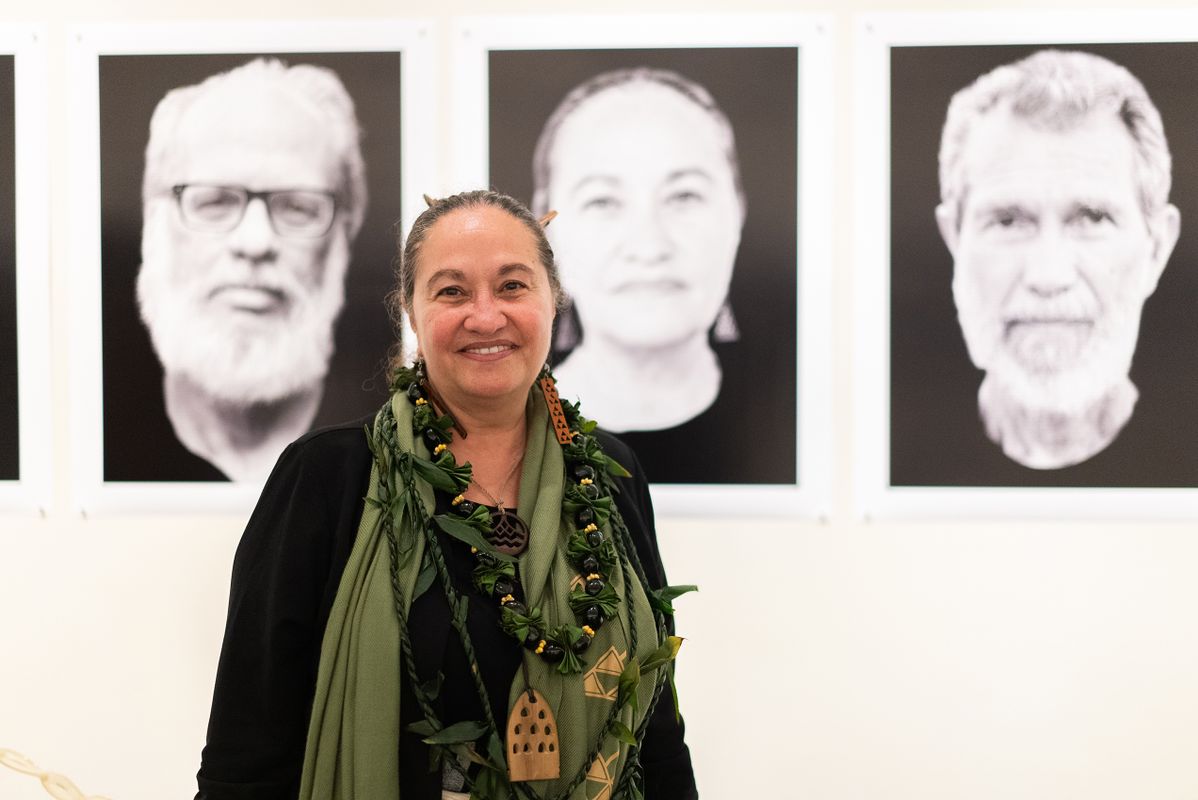
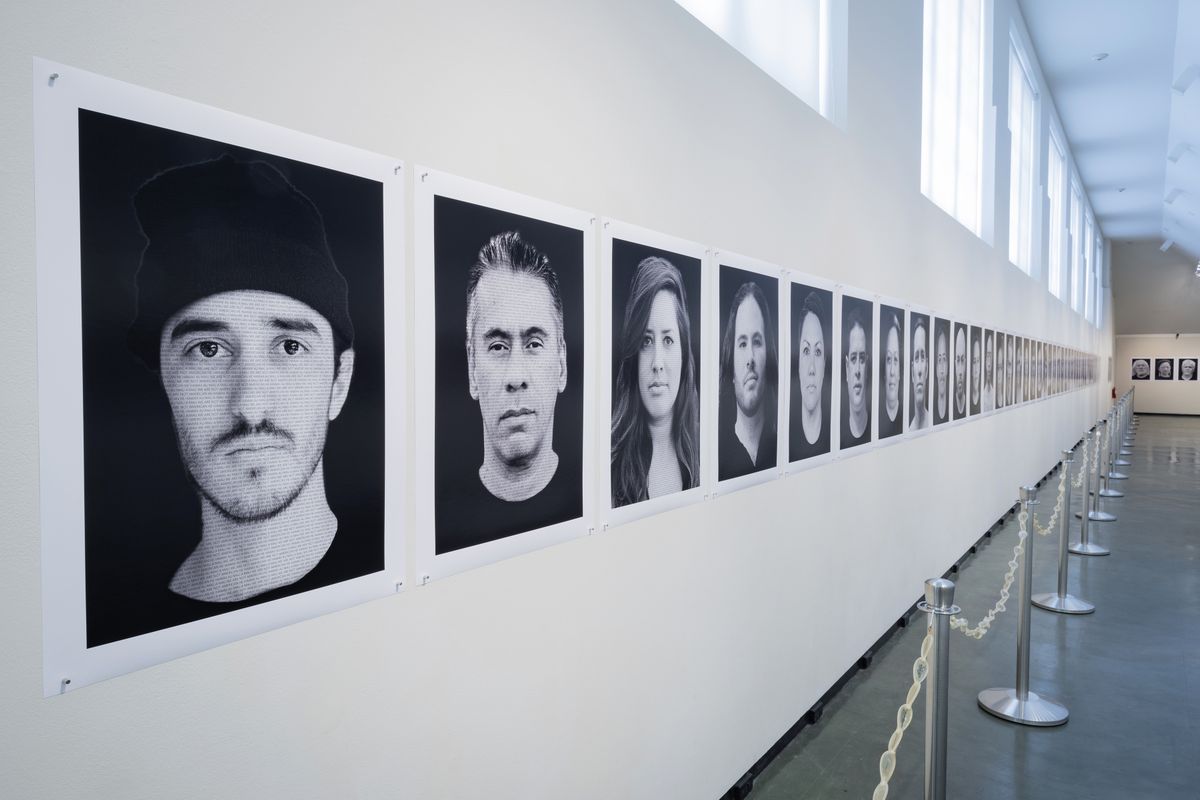
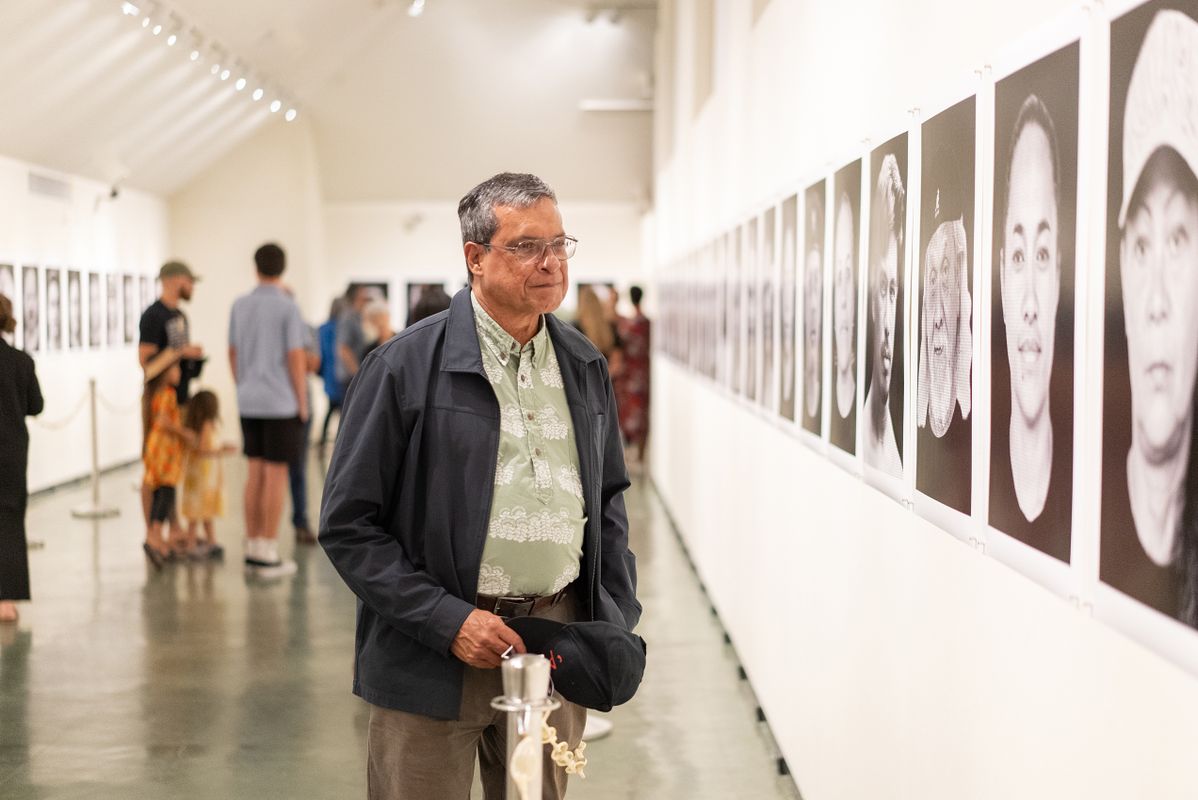
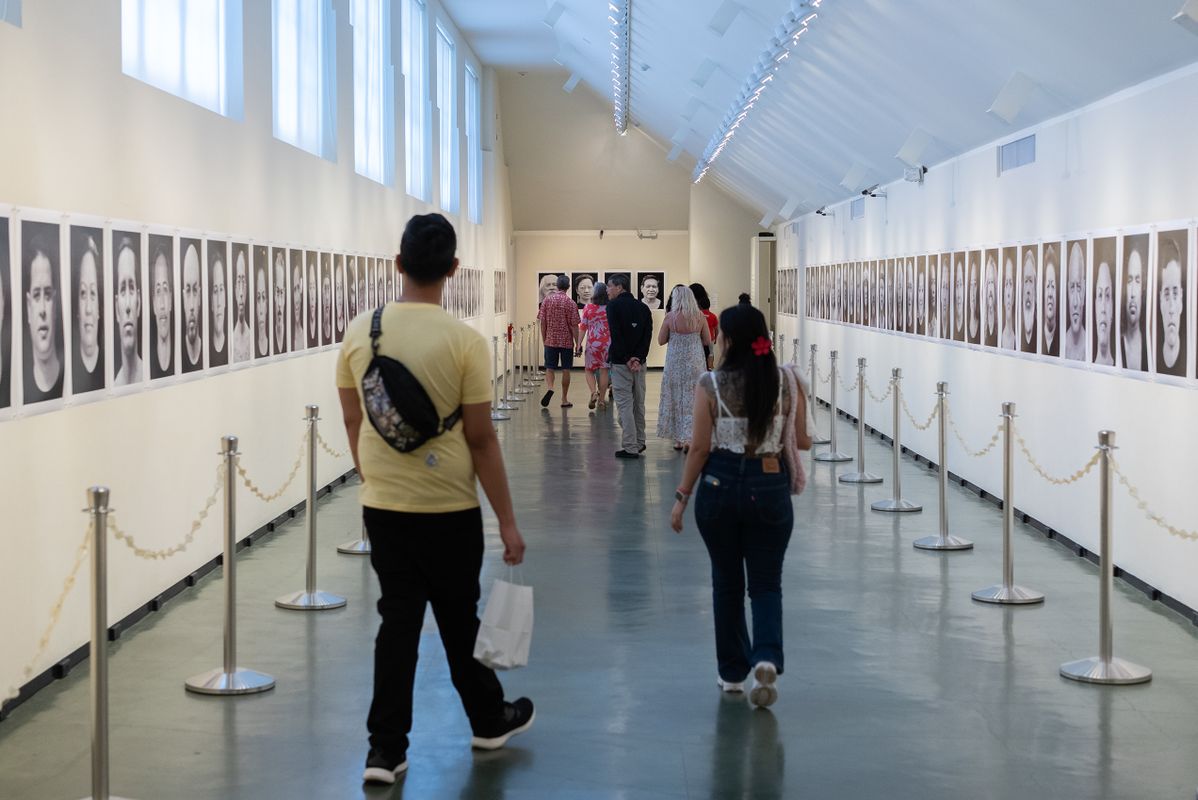
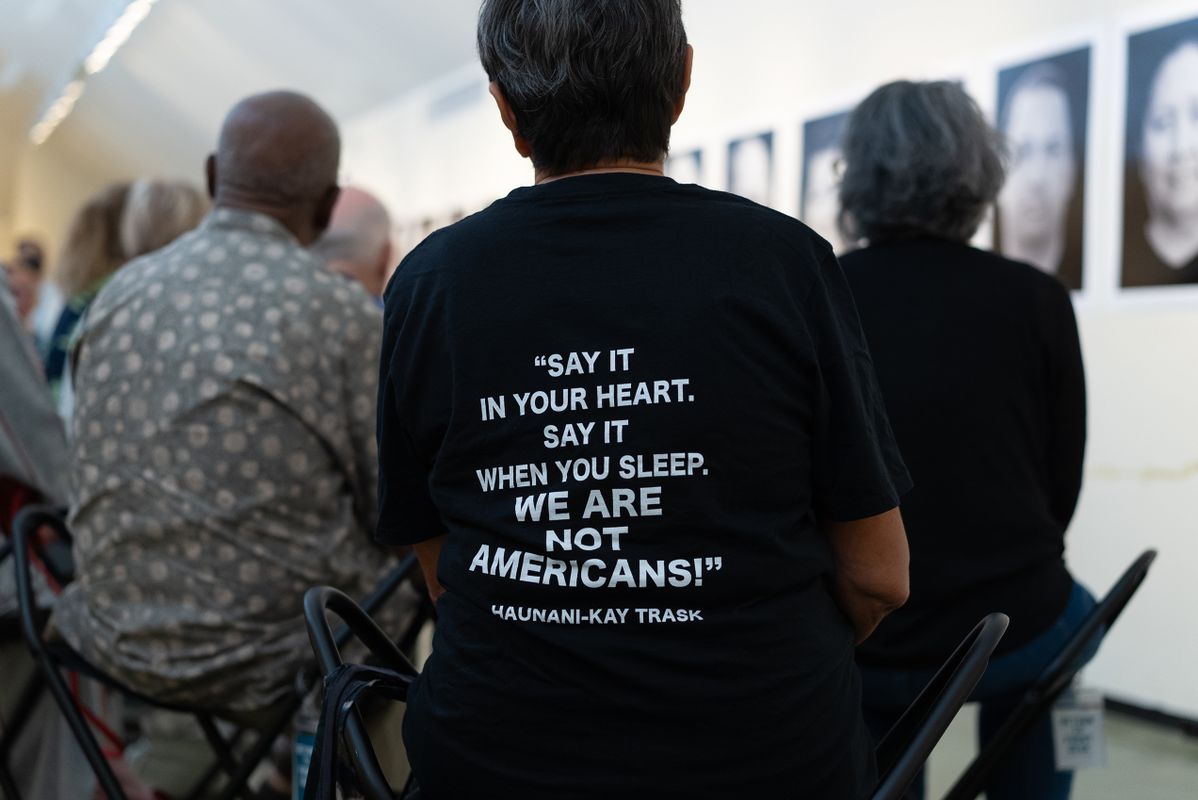

 Story
Story
